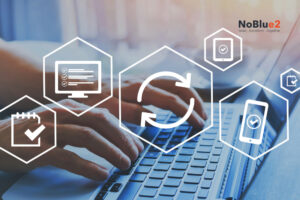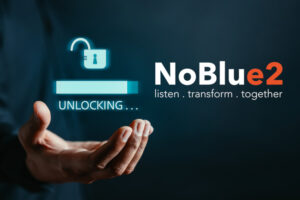The global market for Software-as-a-Service (SaaS) was worth $257 billion in 2020 and is expected to grow by more than 40% to reach an estimated $362 billion in 2022.
SaaS is popular because users and businesses can choose from a diverse range of readily available software, with feature-rich solutions, accessible from anywhere. SaaS software is rapidly deployed, benefits from ongoing upgrades and improvements, is easily scalable and has predictable costs.
Here we explain what SaaS is and take a look at some of the trends in the SaaS industry.
What is SaaS?
SaaS is a model that provides software to users on demand. The software is hosted in the cloud by the provider and is accessed by the user via the internet.
SaaS applications uses subscription-based billing, typically with monthly or annual payments. Access is granted to users either with a local client application or more usually, simply through a web browser. There’s no need therefore to download and run complex software, meaning business users don’t require costly hardware, nor specialist IT staff to maintain it.
Being cloud-based, the software is upgraded and maintained by the provider entirely in the background and without any disruption to the users’ business while the updates are made.
What are the Applications of SaaS?
The uses of SaaS are seemingly endless. Anything you can do with software can be delivered as a SaaS model. Perhaps most well-known are the productivity, collaboration and project-management software solutions – like Slack and Teams, as well as video conferencing software such as Zoom.
Then there are other functional applications – for customer relationship management (CRM), human resources (HR), and marketing automation, including email marketing software.
Document creation – like Google’s suite of tools and Office 365 – and file sharing and storage applications like Dropbox are popular too and work well when delivered via the SaaS model.
While many applications are offered free, or at low cost, the SaaS delivery model works well for software of all types, including the more complex systems. Accounting packages, and full business systems – like NetSuite ERP – can be delivered using a SaaS model too.
What was once seen as a forward-looking solution is now very much the mainstream – for consumers and businesses alike. But where is SaaS headed in the future? What are the trends we can expect?
Hybrid Working Will Drive Continued Growth
The pace that SaaS solutions were adopted accelerated as a result of the COVID-19 pandemic. Companies saw how easy it was for businesses already using SaaS products to shift quickly to home working and they were convinced of its efficacy.
Remote working has triggered massive demand for products that help with collaborative working, or for accessing previously centralised data and intelligence. Companies with on-premises finance and accounting systems, for example, have found it difficult to deliver access to their staff. Cloud-based solutions allow staff to work from home because there’s no need to install or maintain software for each user. Instead, it’s delivered in a decentralised fashion and often requires little training or support.
Many companies have seen the benefits of maintaining less office space and allowing employees to work from home more often. When the pandemic comes to an end, more companies are set to move towards hybrid working as standard, so more SaaS software will be required to facilitate that – as seen with the massive uptake of Zoom.
The benefits for SaaS providers of having a recurring revenue business model are apparent, and companies will increasingly open up to this very favourable option by moving their products to subscription basis.
Development of SaaS APIs
With greater business use of SaaS solutions, companies have needed to integrate them more deeply with their existing systems. For example, when a new customer signs up to an email list, you might want to automate that and have the details imported straight into your CRM. Doing this requires access to the software provider’s API (Application Programming Interface).
While third parties like Zapier have been relied on to provide these sorts of connections, providing your API can be a key differentiator for SaaS providers. Those companies that innovate by opening up their APIs for customer use will be providing a better integration service.
Emphasis on Product-Led Growth
The SaaS market is seeing increasing competition, with more new entrants offering the same or similar solutions. This makes a company’s dominance increasingly fragile. For example, Zoom was very quickly able to take the top spot from Skype in the video conferencing sector during the pandemic.
To prevent customers from leaving and turning to their competitors, and to continue to drive growth through acquisition, SaaS providers need to place a greater emphasis on how their product meets their customers’ needs. Delivering an outstanding customer experience is the key to future success. SaaS companies will need to employ product-led growth to attract customers and engender ongoing loyalty.
Product-led growth is a model used by software companies whereby the emphasis is placed on the end-user. The stages of growth then stem from that. So, the initial acquisition is a single user in a company. If the product is good, that expands to the rest of the team and then there is a conversion throughout the company. Longer-term, retention of those customers depends on the product continuing to meet their needs.
Continuing the previous example, it’s clear that Skype had lost its way, and was unable to compete. It had started offering features that users didn’t need, instead of concentrating on the core of the application: reliable, quality video calling. Zoom’s product had already filled that gap and the pandemic became the catalyst for massive growth as people suddenly needed a reliable product, and peer recommendation did the rest.
By focusing on customer needs, companies will be able to develop products that are in demand by users. It’s not good enough for the product to simply look good and function well, either. To achieve the growth, the software needs to solve customer pain points. In this way, the product will be adopted by those that use it, and not need to be “sold” to management or the board.
NetSuite has a full suite of SaaS-delivered business management solutions – for ERP, CRM, global operations, ecommerce and more. If you would like to take advantage of SaaS industry trends and future market developments, we can help you with a free business consultation or a quote. Book an appointment now or contact us today.










